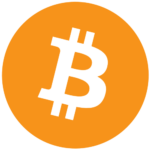Layered Money Book Summary

This is the Layered Money Summary by Peter Conley. It is a review of the book, Layered Money by Nik Bhatia.
PREFACE
The most commonly known examples of layered money are a gold coin and a gold certificate. They were interchangeable not too long ago.
FIORINO D’ORO
Before layered money, there was simply money. Precious metals allowed economic activity to boom and civilization to grow because of a common token to transmit value.
The European Renaissance flourished due to the help of Fiorino d’Oro of Florence Italy who helped mint the Florin gold coin; which became the standard monetary coin for commerce in and around Europe.
The florin worked because over the course of decades and centuries its weight and size were not altered. It was a trusted unit of account.
Due to the heaviness and lack of transportability of heavy metals, the “velocity of money” had limitations. I.e. trade could only travel as quickly and as easily as the coin could.
THE EMERGENCE OF LAYERED MONEY
Due to monetary metals being difficult to transport across space, “layer two” money was invented i.e. a paper promissory note that was as “good as gold”.
The paper bill became an abstraction of gold itself, allowing monetary metals to stay as the form of money but transcend their cumbersome nature to improve commerce & trade.
The paper bills or “bills of exchange” allowed for a fractional reserve system i.e. you could issue more bills of exchange than gold coins represented and increase the money supply as long as all parties don’t all at once try to redeem their paper money for the first layer money.
With gold as the standard layer one money, it allowed for “bills of exchange” to be exchanged and created the “money market”.
Thereby increasing trade across all types of borders and nations. A common form of money opened up commerce in unimaginable ways.
FEDERAL RESERVE SYSTEM
The Federal Reserve was created in 1914 in order to create a “lender of last resort” in order to backstop any financial crises that might occur.
The United States dollar eventually became the world reserve currency as a result of the Bretton Woods agreement and the Federal Reserve gained immense global power as a result.
At first, The Fed only owned gold as a layer one money, but that quickly evolved into owning treasury bills alongside gold in order to pay for WWI spending.
RETIRING GOLD
In 1933 President Franklin Roosevelt issued Executive Order 6102 which mandated that all private ownership of gold by citizens must be traded in for cash. This effectively made the central banks have a monopoly on first-layer money and forced the United States citizens into a future system of inflation and debasement. Just like the fallen empires of the past.
After WWII, the U.S. dollar became the world reserve currency, so all the other nation’s central banks could hold dollars as their layer one money instead of having to deal with the cumbersome gold bars.
The Fed would then blend gold as their layer one money with treasury bills to expand the money supply and their funding without having to increase taxes or sell war bonds.
In 1971 president Nixon suspended the requirement for the United States central banks having to legally redeem the U.S. dollar for gold which was the official end of the Gold Standard and ushered us into the era of Fiat money.
FEDERAL RESERVE SYSTEM
The Federal Reserve was created in 1914 in order to create a “lender of last resort” in order to backstop any financial crises that might occur.
The United States dollar eventually became the world reserve currency as a result of the Bretton Woods agreement and the Federal Reserve gained immense global power as a result.
At first, The Fed only owned gold as a layer one money, but that quickly evolved into owning treasury bills alongside gold in order to pay for WWI spending.
DOLLAR IN DISREPAIR
Today our financial system is clearly broken, and nearly on the precipice of collapse. We approached the brink during the 2008 financial crisis and yet again after the March 2020 pandemic response.
Without gold, U.S. treasuries stood atop the money pyramid and had no constraint beyond the policy constraint. The money supply could be expanded by 20% overnight with a single update of the Fed database.
The system became exponentially more fragile when higher layers started to leverage or use derivatives products on layers two and three. This effectively created a system that increased the ratio of “base money” to money in circulation to rates we haven’t seen this century, or perhaps ever in the history of this country.
If there ever was a shock to the system, all financial institutions would rush to climb the top of the money pyramid for more “secure” forms of money, and eventually, someone would be left holding the bag of worthless lower-layer money which would trigger defaults on a scale we haven’t seen before.
A RENAISSANCE OF MONEY
On October 31st, 2008, amidst the fallout of the 2008 financial crisis, a pseudonymous computer programmer named Satoshi Nakamoto published a White Paper detailing a new form of money they created to an obscure email list of cryptographers.
A few months later, on January 3rd, 2009 the first bitcoin block was “mined” and the Bitcoin network officially came online.
Bitcoin can have three related metaphors to help people understand it. It’s digital gold, digital land, and money that functions like email.
It’s like gold in the sense that ”miners” or specialized computers must expend drastic amounts of computational power and electricity to bring them to market or “mine them” just like gold miners to expend kinetic energy to physically move new gold into the market.
It’s like land in the sense that there is a finite amount, no more will ever be created, and it’s like email in the sense that you have a public address like an email address and a password that allows you to send transactions from that account.
To ban Bitcoin would be trying to attempt to ban open-source software, which was ruled by the Supreme Court as free speech. Therefore bitcoin is free speech.
Bitcoin is following the adoption curve similar to monetary metals. First, it is being used as a store of value, then a medium of exchange, then perhaps its last function will be a unit of account.
LAYERED BITCOIN
Bitcoin can be used as “layered money” just as gold was on the Gold Standard. There are, and will be more, “bitcoin banks” that act as custodians for users and then lend out layer two money on top of those reserves.
Owning your “private keys” is like owning physical gold. You, and only you, control the bitcoin wallet that stores your bitcoin, no outside party can control it unless you give them your private keys.
Most bitcoin balances on bitcoin exchanges are actually “bitcoin I.O.U.s”, not first layer bitcoin. The exchanges leverage the user’s deposits just like a traditional bank – it is a fractional reserve system.
Additional layers have been built by independent developers on top of the core bitcoin protocol. New inventions like the “Lightning Network” allow for users to transmit and send bitcoin “off-chain” in real-time.
Additional cryptocurrencies like “stable coins” are being built on top of the first layer of Bitcoin to mimic the use of “paper claims” of a traditional banking system. It helps solve the volatility problem of bitcoin’s day-to-day value.
CENTRAL BANK DIGITAL CURRENCIES
In response to the invention of bitcoin and the proliferation of other cryptocurrencies, most central banks have been developing central bank digital currencies or CBDCs.
CBDCs will serve as another second-layer form of money as a claim on their reserves and first-layer money of the banks. CBDCs allow for the possibility of “helicopter money” or essentially distributing stimulus money directly to taxpayers.
CBDCs are inherently different from bitcoin due to the deep centralization of their nature. It will be seen how these new inventions play out and their impact on the cryptocurrency market.
FREEDOM OF CURRENCY DENOMINATION
The potential of bitcoin is that it is a global & uniform form of layer one money that will be held by nation-states in their treasury, central banks, and even private parties like us.
A new financial system, denominated in BTC will be built upon this new base layer of money.
Ultimately bitcoin is a “money of choice”, it isn’t forced upon people by the decree of the government. Time will tell if the free market chooses it to be the first layer of money for the global financial system.
Related Books
Layered Money Quotes
“Nobody could have ever conceived of a more absurd waste of human resources than to dig gold in distant corners of the Earth for the sole purpose of transporting it and reburying it immediately afterward in other deep holes, especially excavated to receive it and heavily guarded to protect it. The history of human intuitions, however, has a logic of its own.”
-- Nik Bhatia
Layered Money Lessons
- The creation of paper claims on gold allowed for the velocity of money to rapidly increase due to the increase in portability
- In the past, there was just “money”. There were no other layers. Gold is used only in the form of gold
- The renaissance was able to flourish out of Europe in part due to the trusted gold coin, the Florin
- Gold was officially retired as a “layer 1” form of money in the United States in 1971 due to Richard Nixon’s policies
- Bitcoin can be layered, just like gold, to increase its velocity with the use of “bitcoin banks” (crypto exchanges) and the lightning network
Affiliate Link Disclosure
This post contains affiliate links. If you use these links to buy something we may earn a commission. Thanks.”







